In addition to thermal absorption and emission, the gas in stellar atmospheres scatters radiation. The main source of scattering is free electrons (in hot stars) and Rayleigh scattering by atomic hydrogen (in cool stars). This scattering leads to polarization of the emergent radiation. Based on available model atmospheres, we present the polarization and limb darkening for stars of many types:
Over the years, I have made constant use of "J", a terse computer language.
This page provides some examples of my J code applied to astronomical problems,
particularly to radiative transfer problems involving polarization and line transfer:
My J Page
Geometric Algebra is a powerful and logical system which superceeds traditional vector analysis. If you have never
encountered this area before (releated names: Clifford algebras or Grassmann algebra) you should take a look.
A clear introduction to this math is Linear and Geometric Algebra by Alan Macdonald. (Also, this paper.)
The classic text developing applications to many areas of physics is Geometric Algebra for Physicists by Doran and Lasenby.
Another very interesting (and inexpensive!) book is Matrix Gateway to Geometric Algebra, Spacetime and Spinors by Garret Sobczyk.
From the old Mathematical Society of London, we have the Astronomer's Drinking Song, which seems to have been sung at a meeting around 1800. It's too good to be forgotten. The history can be found in "A Budget of Paradoxes" by Augustus de Morgan.
Watching FOX NEWS (an unbelievable source of information), I was made aware of the truly horrendous message encoded in these four numbers. Suddenly, it occurred to me that I have many numbers on this web page -- what if that message were somehow hiding amongst them! I quickly wrote a very sophisticated program to search for such a ghastly possibility. Here is that program:
To my dismay, I discovered not one, but huge numbers of these foul digits lurking there. For example, the directory "SYNSPEC_POL_mu18/ASCII", when interrogated by my program, reveals countless cases of infection by this treasonous message. Here is a random example: Don't Look at the red nuber
This leaves me with a real dilemma: must I go through all my data and change the dread number to something different, but close (8645?), and hope it will not affect my computations, or should I remove all the numerical data from this site?
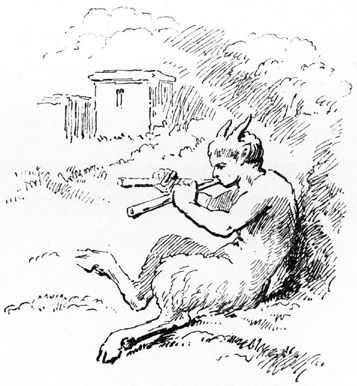
Heraclitus (~500 BCE)
Here are a few souvenirs of Siebenburgen. In the 11th century, Germans emigrated to Transylvania where they settled, built cities, and maintained a separate identity in the land they called "Siebenburgen". These so-called "Transylvanian Saxons" have now mostly emigrated back to Germany, unwilling to lose their identity in communist Romania and its aftermath. But the strange medieval character of the Transylvanian cities remains a witness to their history.
Here are a few images from my visit in August 1995.
One of the most charming of all the old towns is
Schassburg (Sighisoara in Romanian), which is crowned by the great
clock tower. A few steps beyond the tower is the house where Vlad Tepes
(AKA Dracula) was born. I found a restaurant on the second floor;
we had a very pleasant lunch there.
(Compare the tower with this 19th century print.)
The quintessential Saxon city was Hermannstadt (Sibiu). The dormer windows in the roofs seem to regard you with sleepy eyes, while the arched openings turn buildings into Bosch-like creatures.
Most characteristic are the "Kirchenburgen", the fortified churches, which were a place of refuge in troubled times. This church is located near Kronstadt (Brasov). The name is Tartlau.
In the wall surrounding the church at Mediasch (Medias), I found this wonderful old door. More art deco than medieval, it nevertheless carries an aura of mystery.
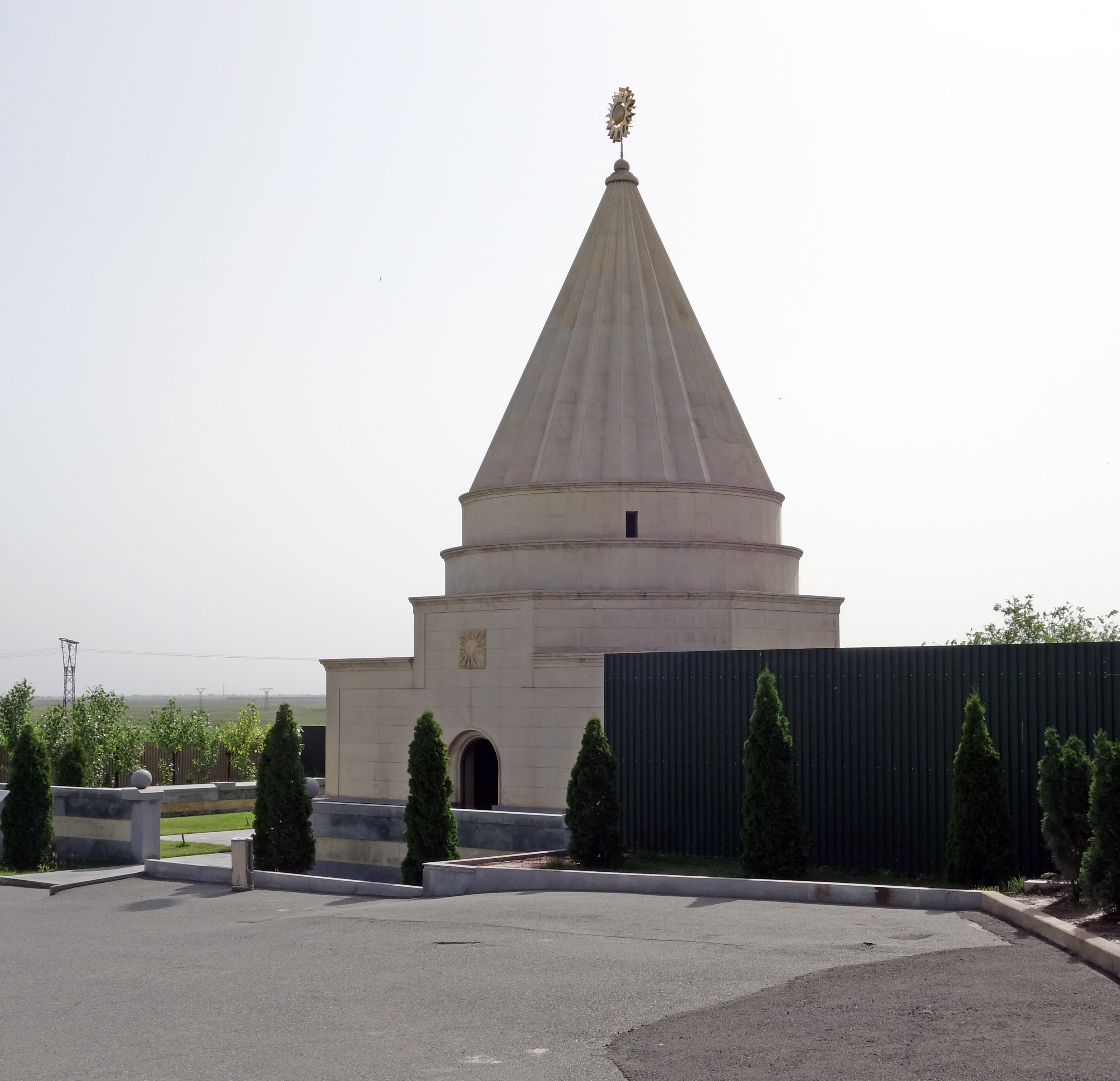
On 29 May 2015, I visited this new Yazidi Temple, located just outside Yerevan, Armenia.
Here are further views of the sanctuary complex.
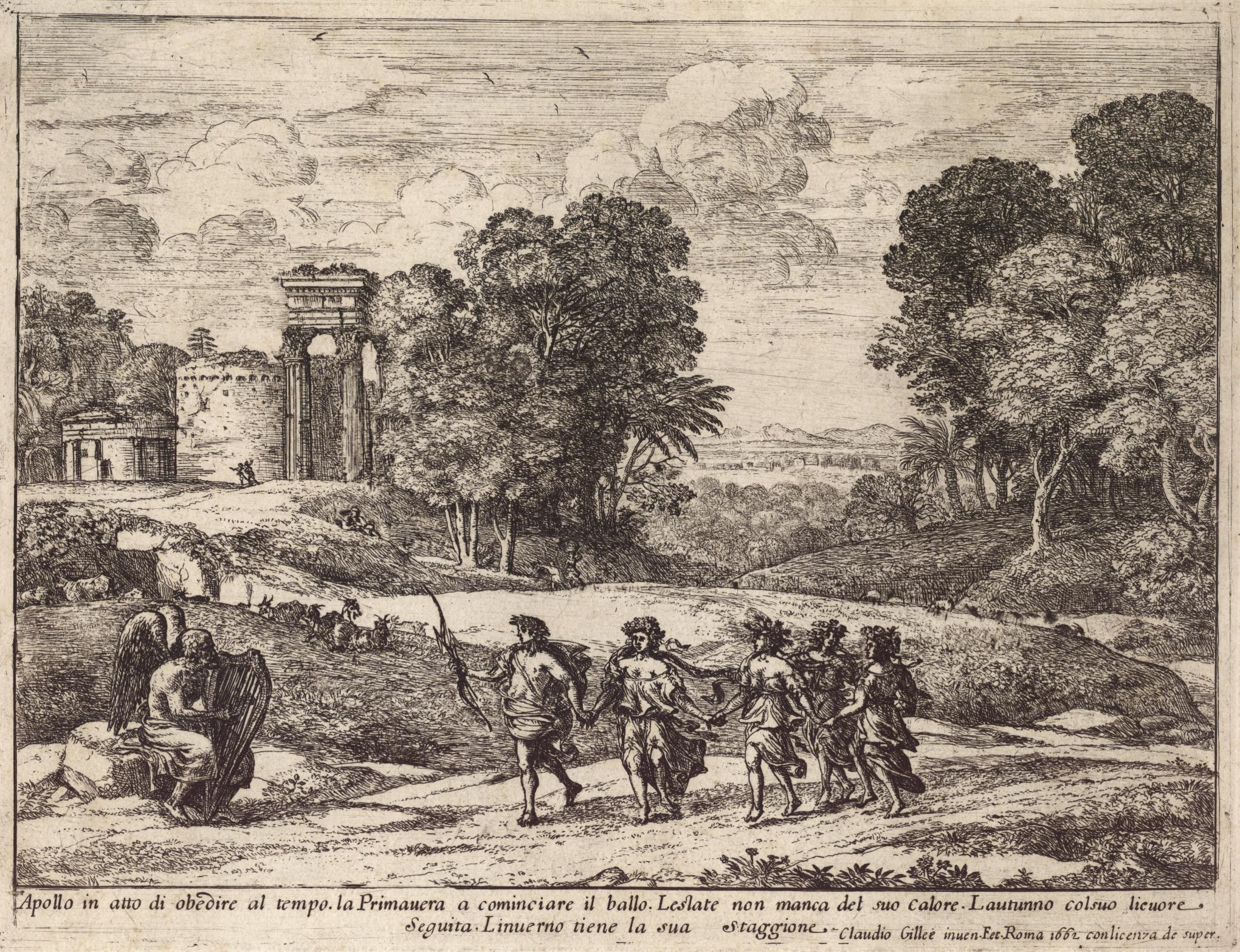
![]()
"Time, Apollo and the Seasons"
by Claude Lorrain
![]()
"Now these things never happened, but always are." -- Sallustius
The inscription reads:
"Apollo in the act of obeying Time. Spring starts the dance. Summer with its heat is not absent.
Autumn follows with its sweet wine. Winter marks its season."
A related, previously unknown painting came to light in 1987.
The Etchings of Claude Lorrain and Gaspard Dughet.
Georges Focus: The Strange Case of a Mad Artist.
Portrait of an Early Astronomer
Pittacus of Mytilene
An Etching with a Mysterious Subject.

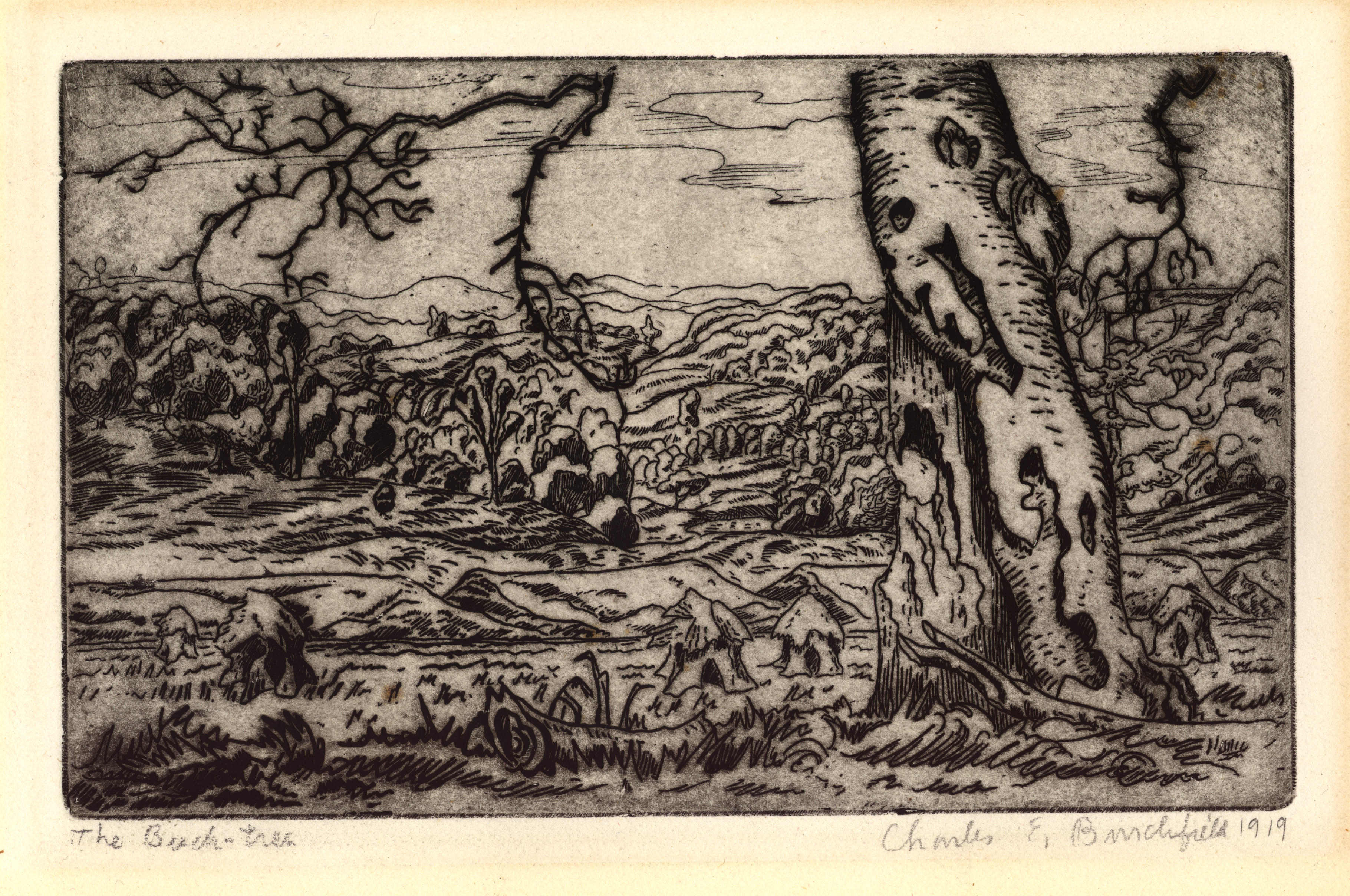
![]()
"The Beech-Tree"
by Charles E. Burchfield (1919)
![]()
Zinc plate etching, 5 1/8" x 8 1/4". This heavily-inked impression is titled "The Beech-tree"
at the lower left, although the title is usually given as "Beech Tree and the Valley
of the Little Beaver". Between July and September, 1919, Burchfield completed this and
at least ten other etchings. Only trial proofs of the plates were pulled by Frank Wilcox,
who had encouraged him to try this medium. In 1953 an edition of ten impressions was
printed from this plate, in connection with an exhibition of Burchfield's drawings.
This is Burchfield's only published etching. The fact that the impression shown here
is titled but not numbered suggests that this is a proof pulled in 1919. Many of the
proofs were titled. The Burchfield-Penney Art Center in Buffalo NY holds one of the 1953
impressions; it is not titled, but is numbered in the lower right corner. Here is another
fine impression, presumably one of the ten pulled in 1953:
"The Beech Tree"
In addition to this etching, there are a small number of other prints by Burchfield. Here are most of them:
Prints by Charles Burchfield.
Since it is hard to "erase" a mark on an etching plate,
Burchfield first did a series of drawings in violet indelible pencil as a sort
of discipline for the etching process. Here are two of these drawings:
"Under the Apple Tree" and
"Evening in the Alley". (Did you
notice the moon peeking through the trees in "Evening"?)
I gave a talk some years ago (8 Apr 2018) in Salem, Ohio to the Burchfield Homestead Society.
While it was not recorded live, I've reproduced my talk for the record here:
Burchfield's Astronomy.
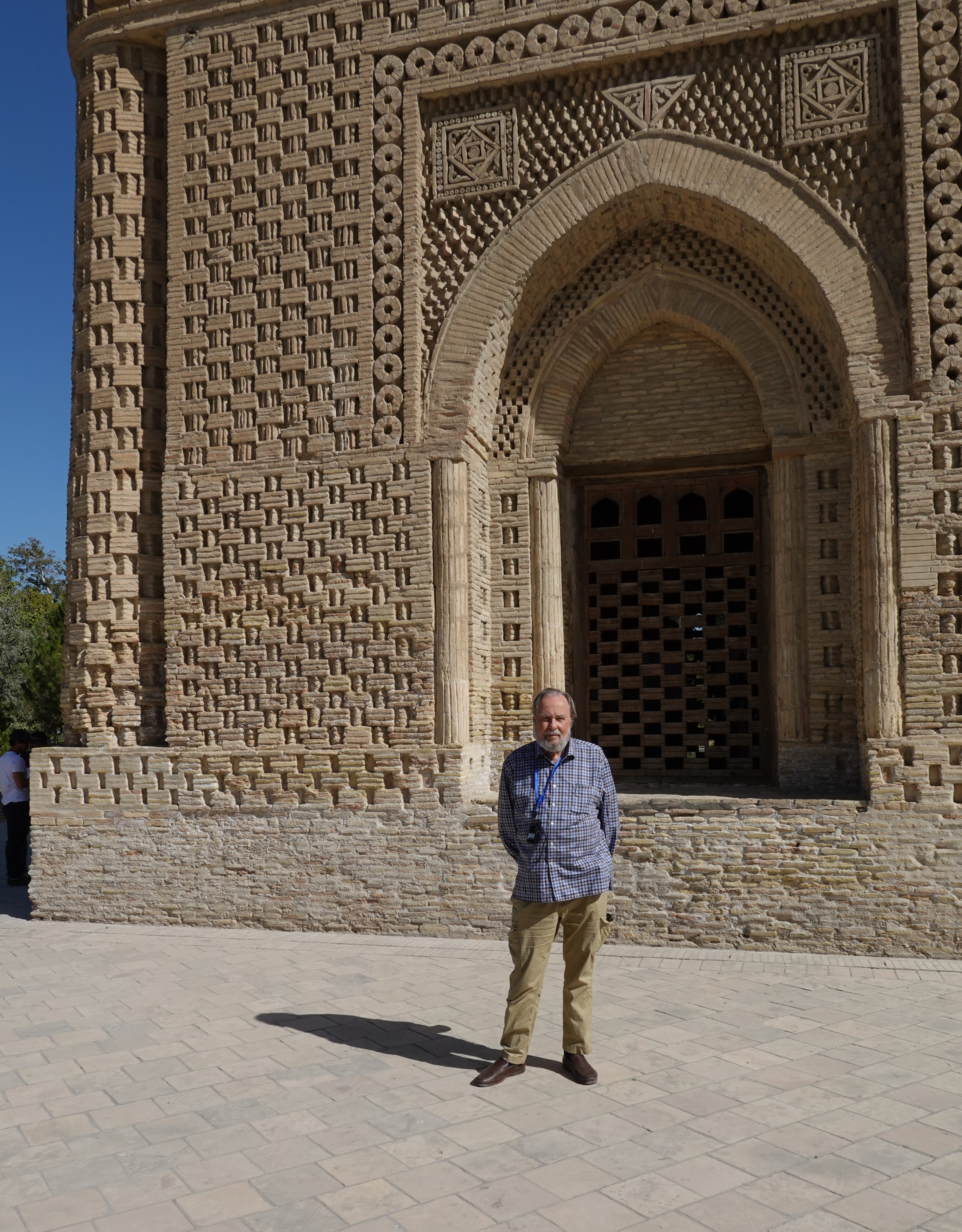
From a recent visit to Bukhara, Uzbekistan: The Tomb of the Samanids (ca. 900 AD) with amazing brick work.
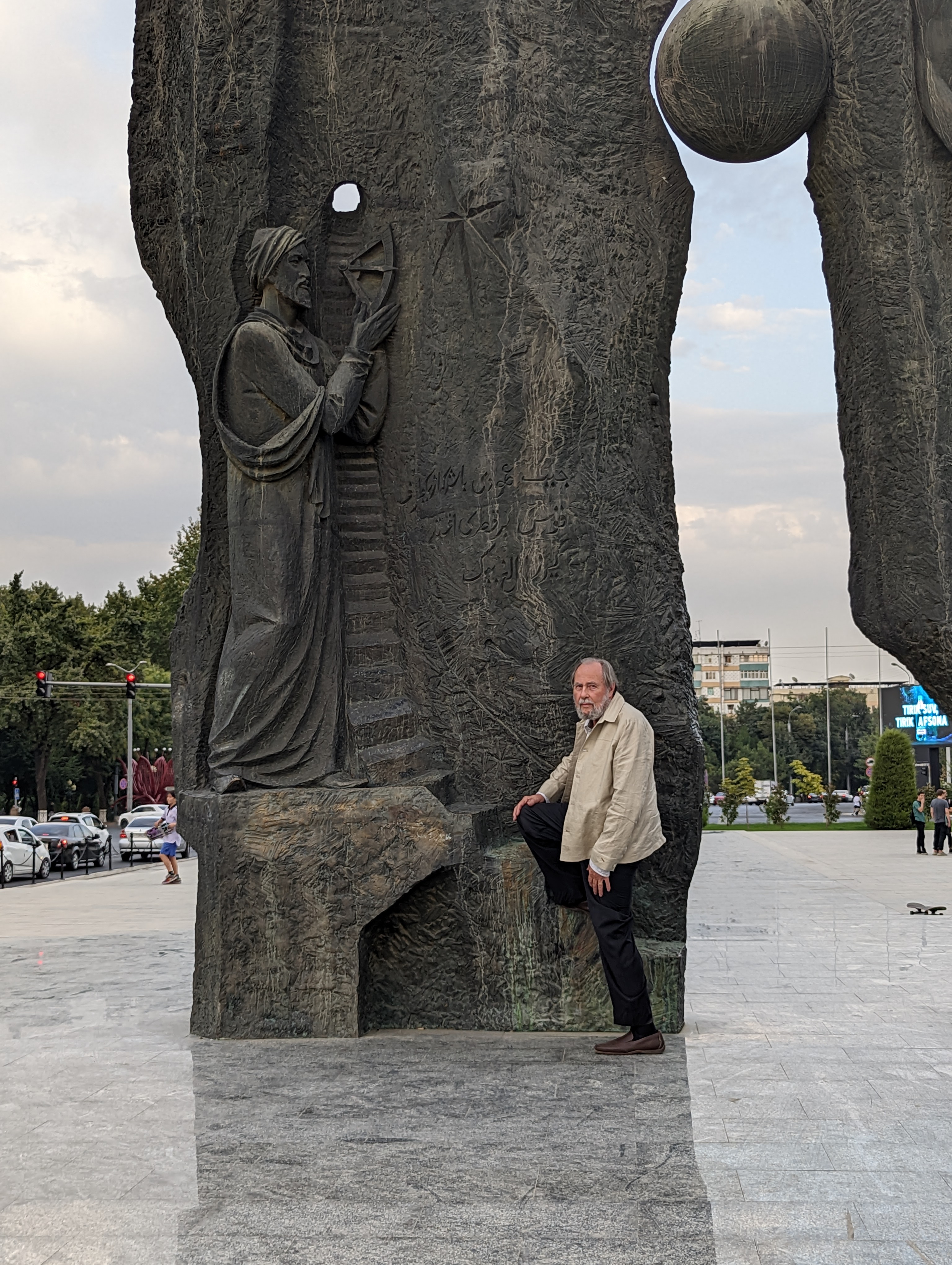
A stairway to the heavens. The Cosmonaut Monument, Tashkent, Uzbekistan.
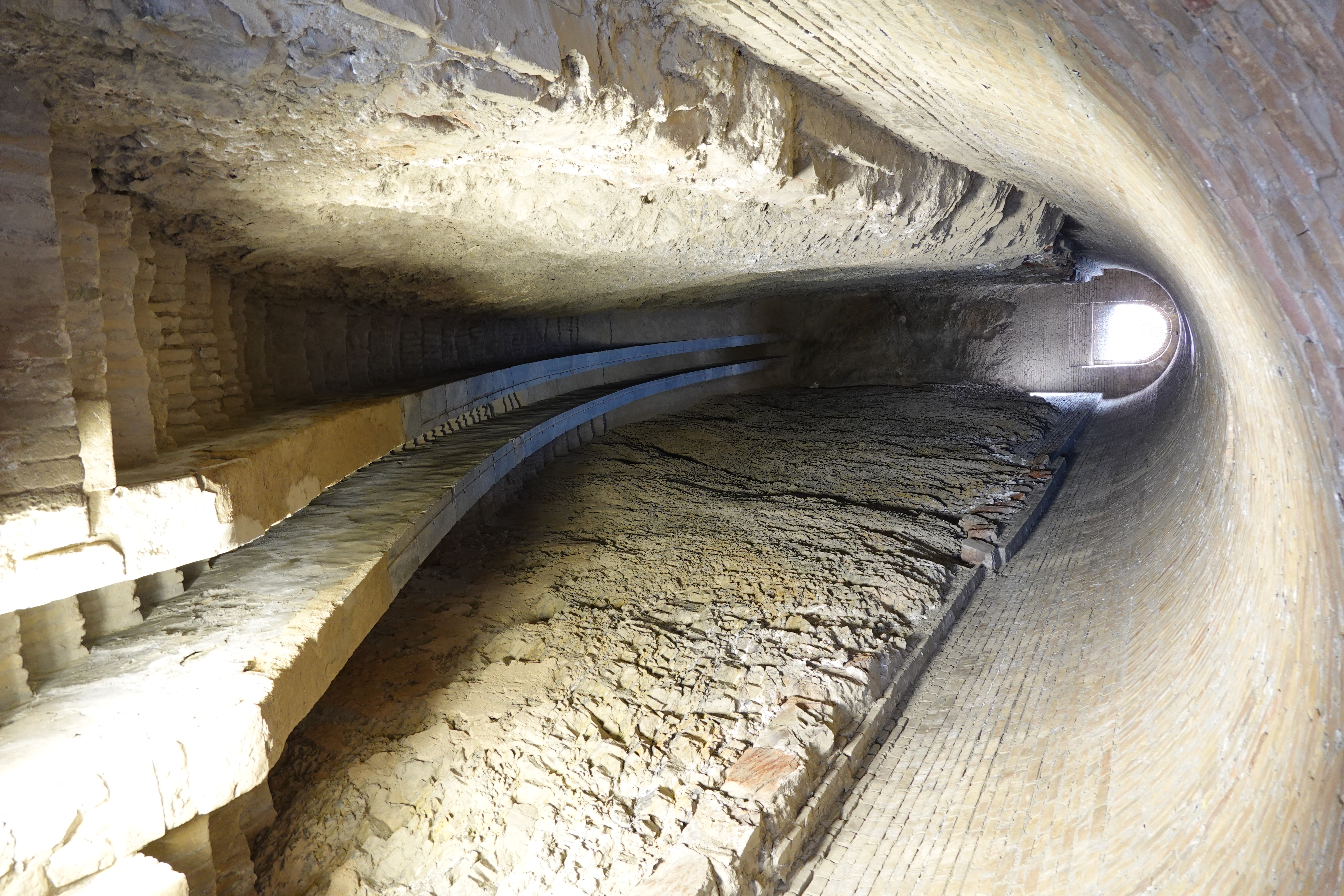
Remains of Ulughbeg's great meridian quadrant, Samarkand, Uzbekistan.
Ulughbeg said "Religion disperses like a fog, kingdoms perish, but the works of scholars remain for an eternity ".
He was assassinated in 1449 by religious extremists and this observatory was razed to the ground.
More about Ulughbeg.
In 1997, a translation of a letter by the Iranian astronomer and mathematician Jamshid al-Kashi was published which describes his experiences at the observatory/institute, in which he describes Ulughbeg's motivation for placing part of the great arc underground: he had concluded that if the whole structure was above ground, the building would not be suffuciently rigid for the most precise measurements. Here is that letter:
Al-Kashi's letter.
Gonur Depe: The 2000BCE Oxus Civilization
Nora Harrington Fletcher: Landscape Paintings
Here is one of Nora's paintings of the Assateaque Island seashore:
"Catching the Morning Light"
Books and Art by Nancy Patz
Nancy's Latest Book (November 2017)